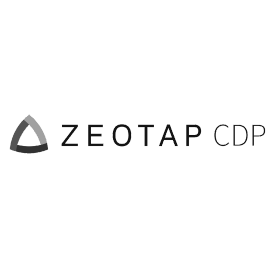Customer Experience Management
If customer experience is knowing what your customer needs and delivering it at the right time, then customer experience management is making sure that happens smoothly. Every interaction, every time. We help you do both.
What our Customer Experience Management Services Enable You to Do
Understand
Understand customers as individuals
We help you make sense of scattered marketing data and turn this into meaningful insights, so you can better understand who your customers are and serve them appropriately.
- Sharing customer insight
- Defining, designing and implementing data solutions
- Maintaining and managing customer identity
Deliver
Deliver personalised experiences at scale
We help you deliver hyper-personalised, dynamic customer journeys that maximise relevance to drive deeper loyalty and growth,
- Developing personalised audience strategy
- Defining, designing and implementing activation solutions
- Implementing, migrating and configuring marketing technology to enable hyper-personalisation
- Delivering personalised customer experiences in-platform
Connect
Connect seamlessly across channels
We help you unify your messaging across every touchpoint, delivering the kind of consistency that builds trust, drives engagement and boosts ROI.
- Building customer experiences across multiple touchpoints
- Connecting data across different platforms, including real-time data
- Implementing, migrating and configuring marketing technology to connect journeys across all channels
- Delivering connected customer journeys in-platform
Measure
Measure incrementality and effectiveness
We help you measure what matters, so you can track what’s working, tweak what’s not, and spend your budget more wisely.
- Defining measurement approaches
- Designing reporting solutions
- Implementing platforms
- Optimising performance based on measurement
Manage
Manage marketing operations efficiently
We help your martech work harder and your teams work smarter, turning complexity into streamlined success.
- Evaluating and implementing new operating models
- Re-engineering processes and resource management
- Helping you automate processes through technology
- Supporting transformations with change management
CXM is about constantly improving how you connect with your customers to keep them happy and loyal for the long run.
Tap CXM’s expertise enables you to transform your existing customer experience management. We’ll help you deepen relationships, make better decisions, and deliver personalised experiences at scale. Not just once but repeatedly, driving measurable growth and delivering meaningful ROI.
Benefits of Customer Experience Management

- Reduced costs
Streamlined processes and communications can reduce manual work, over-utilisation and inventory management. A slicker machine leads to cost savings. - Better decisions
With people, data, tech and processes working together you can make confident, customer-centric decisions. With everything running smoothly, your ability to make them quickly gives you a competitive edge. - Unbridled potential
With ROI growing steadily when everyone is working towards the same goals, your team will have more time for strategy and creativity. Our practical approach gives you the spark of innovation and the means to make it happen.
We’ve had a close and ever-evolving positive relationship with Tap CXM for a number of years. They’re extremely easy to work with on all projects we collaborate together on, and can adapt to tight deadlines with ease. It’s widely known that if Tap are working on anything for us, it’ll be delivered to the highest standards.
Ciaran English, Senior Technical Analyst, Energia Group
Our Customer Experience Services Success Stories
Adobe Experience Cloud
A suite of marketing, analytics, advertising and commerce tools designed to create personalised, seamless B2B and B2B CX
- Technical deployment and platform integrations
- Auditing Adobe solution performance
- Complex analytics and reporting
- Tailoring Adobe solutions to business requirements
- Campaign optimisation, performance and attribution models
- Troubleshooting & resolving technical issues & performance challenges
Apteco
Apteco’s marketing software uses data-driven insights to support smarter campaign automation, targeting, and segmentation.
- Data integration and campaign automation
- Advanced audience segmentation and profiling
- Personalised campaign optimisation
- Reporting and insights generation
- Troubleshooting and resolving technical challenges
Bloomreach
A leading digital experience platform, combining content, commerce, and AI to drive personalised customer journeys.
- Data & analytics strategy & reporting
- Integration with other platforms
- Campaign management and performance
- Omnichannel personalisation and bespoke customer journeys
Braze
Braze simplifies multi-channel marketing and boosts customer engagement, excelling in personalised, data-driven communication.
- Complex platform migrations
- Campaign management and performance
- Training and in-platform optimisation
- Personalisation and bespoke customer journeys
- Finding solutions to Braze limitations
Hubspot
An agile, all-in-one B2B marketing, sales, and service platform designed to help growing businesses connect their data, teams, and customers through streamlined automation.
-
Implementing and optimising HubSpot for B2B marketing automation and CRM
-
Aligning sales and marketing workflows to improve lead management and conversion
-
Integrating HubSpot with wider data and technology ecosystems
-
Building dashboards and reports for campaign performance and ROI
-
Troubleshooting and enhancing platform performance
Imagino
A composable, revenue-focused Customer Data Platform (CDP) that champions modern, agile data management.
- Help with technical deployment
- Proving effective campaign solutions
- Tailoring Imagino solution to business requirements
- Optimising Imagino use to get the most value
Iterable
An AI-powered, cross-channel communication platform with sophisticated segmentation features and comprehensive journey capabilities.
- Technical Deployment
- Implementation of effective campaign solutions
- Tailoring Iterable to business requirements
- Improving utilisation and performance
Salesforce
A cloud-based CRM platform offering tools for sales, service, marketing and analytics solutions.
- Implementation and integration with other platforms
- Tailoring features, functions and reports to suit business needs
- Data quality and migration
- System performance & trouble-shooting
Zeta
Zeta is a data-powered marketing cloud offering AI-driven insights, customer segmentation, and omnichannel orchestration.
- Platform migration and integration
- Building and executing complex multi-channel campaigns
- Enhancing personalisation with AI and machine learning
- Analytics, performance tracking, and reporting
- Optimising system performance and troubleshooting
Dive Deeper into Customer Experience Management







































